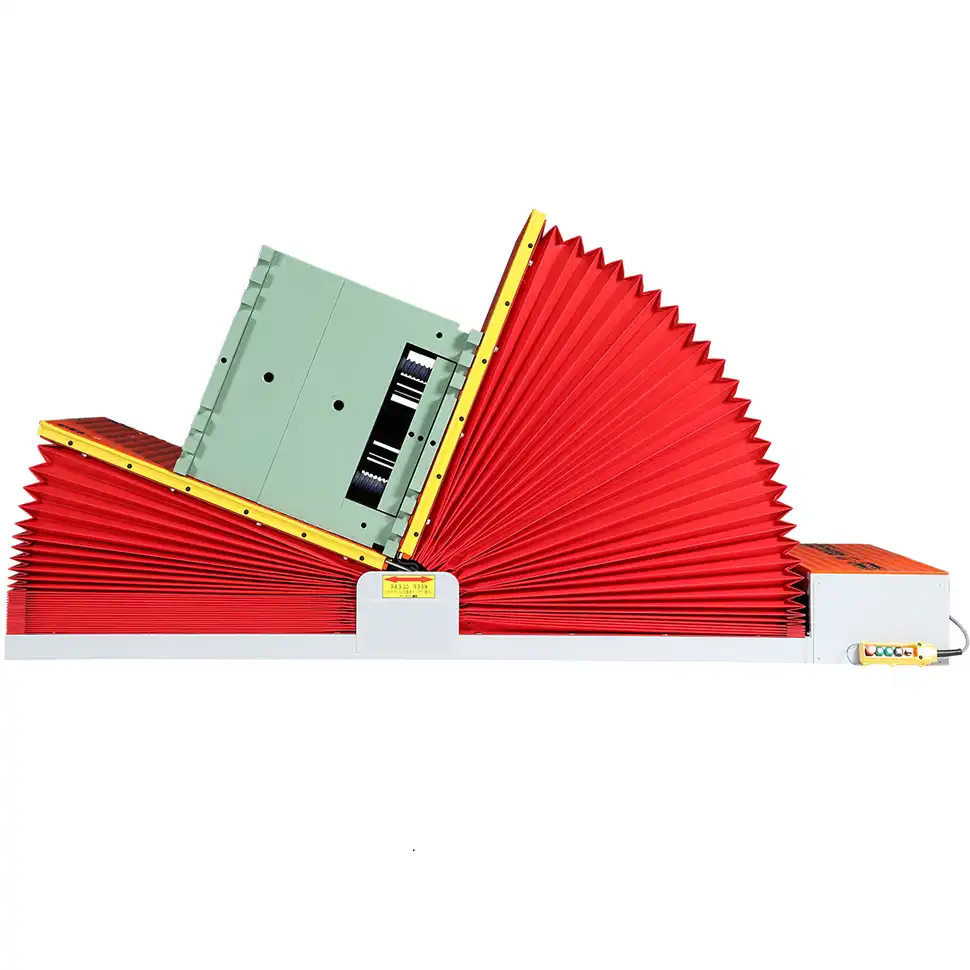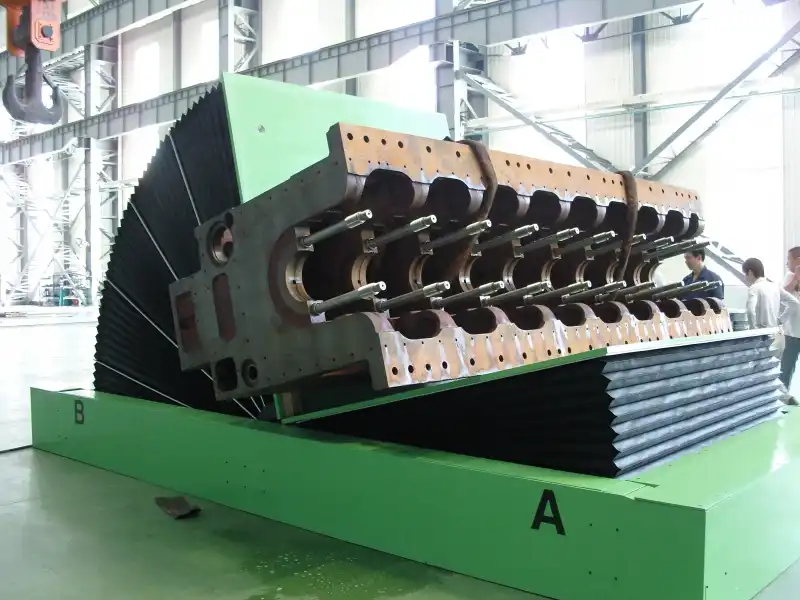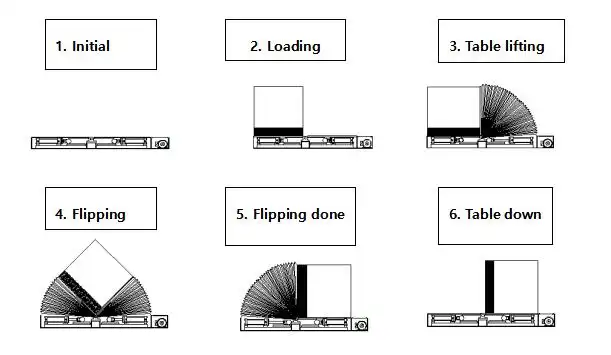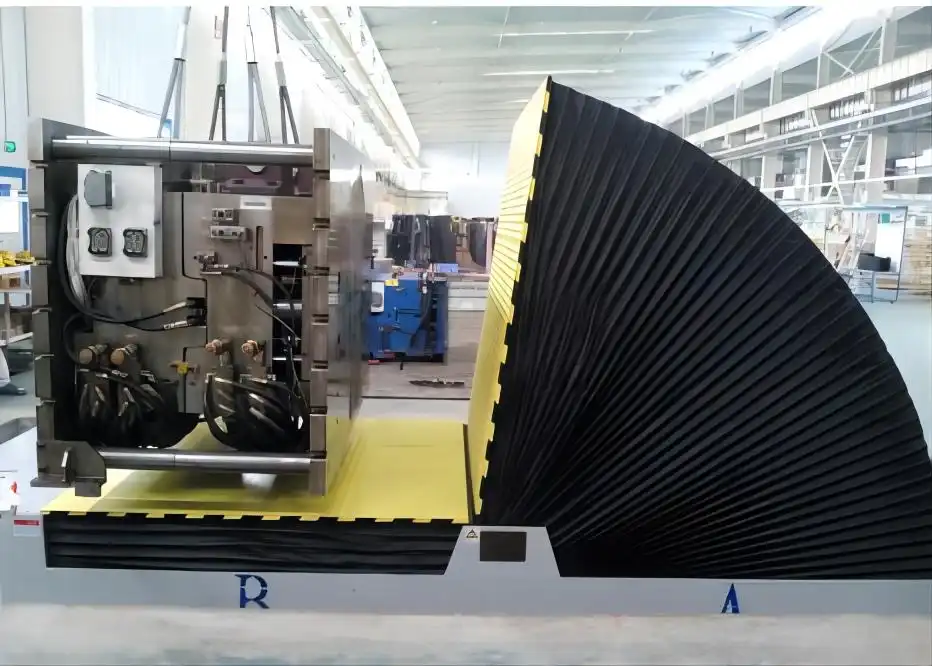Mold Flipper: Is Now the Right Step Toward Broader Automation in Indonesia?
Are you running a manufacturing plant in Indonesia? You probably feel the pressure from all sides. Labor costs are rising. Global competition is fierce. And ensuring worker safety is more critical than ever. You know automation is the future, but the path forward seems complex and expensive. You might be manually flipping heavy molds with cranes, a process that is slow, dangerous, and a major bottleneck in your production line. This single, inefficient step could be holding your entire operation back, costing you time and putting your team at risk every single day. The solution is to start automating, but the question is where to begin. A targeted investment in a simple, high-impact machine like a mold flipper could be the perfect, strategic first step to solve these immediate problems and set the stage for future growth.
Yes, a mold flipper is an excellent and strategic first step for Indonesian businesses looking to embrace broader automation. It offers a fast return on investment, immediately enhances workplace safety, and simplifies a critical process. More importantly, it serves as a foundational building block that can be integrated into more complex automated systems later, making it a low-risk, high-reward entry point into Industry 4.0.

This piece of equipment might seem simple, but its impact is profound. I've seen it time and time again in my career, both as an engineer and as a factory owner. A small change in a key area can create ripples of efficiency throughout the entire production floor. It’s about more than just one machine; it's about making a smart, calculated move that builds momentum. Let’s explore how a mold flipper addresses the core challenges you face and why it's the right move for your Indonesian facility right now.
How does a mold flipper solve immediate safety and efficiency problems?
Many factories still rely on overhead cranes and chains to turn heavy molds. I've been in countless plants and seen this process up close. It’s a tense moment every time. It requires skilled operators, clear communication, and a bit of luck. The risk of a sling slipping or a chain breaking is always present. A single mistake can lead to a catastrophic failure, damaging a mold that costs thousands of dollars, or worse, causing a serious injury to a worker. This isn't just a hypothetical problem; it's a constant source of stress for plant managers and a real danger for employees. The process is also incredibly slow, tying up your valuable crane and operators for a task that shouldn't be a bottleneck. So, you have a process that is slow, risky, and inefficient.
A mold flipper directly solves these safety and efficiency issues by replacing the hazardous, manual crane operation with a stable, controlled, and mechanized process. It drastically cuts down the time required to turn a mold from many minutes to under a minute, which eliminates a significant bottleneck and immediately improves the safety of your entire mold handling procedure.

A Closer Look at the Transformation
Let’s break down exactly how a mold flipper changes the game. When I first started as an engineer, I saw the traditional method firsthand. It involved at least two people, sometimes more. They would attach heavy chains or slings to the mold, and the crane operator would have to carefully lift and rotate it in mid-air. The potential for the load to shift unexpectedly was high. The whole operation would stop while this was happening.
Now, contrast this with a mold flipper.
- Structure and Stability: A mold flipper, whether it’s a 90-degree or 180-degree model, is built with a heavy-duty steel frame. The mold is loaded onto a stable platform at ground level. There are no dangling loads and no precarious balancing acts. The center of gravity is low and controlled.
- Controlled Movement: The turning process is handled by a powerful hydraulic or electric motor system. The movement is smooth, predictable, and repeatable. The operator simply pushes a button from a safe distance. The machine does all the heavy work. This eliminates the human error and physical strain associated with the manual method.
- Speed and Simplicity: What used to take 10-15 minutes of careful coordination can now be done in about 60 seconds. A forklift places the mold on the flipper, the operator presses a button, and the mold is ready. The forklift can then pick it up and move it to the next station. Your overhead crane is now free to do what it’s best at: moving materials over longer distances, not performing risky flipping maneuvers.
Here is a simple comparison to make it crystal clear:
| Feature | Manual Crane Flipping | Dedicated Mold Flipper |
|---|---|---|
| Time per Flip | 10 - 20 minutes | 1 - 2 minutes |
| Labor Required | 2-3 operators (incl. crane) | 1 operator (part-time) |
| Safety Risk | High (dropped loads, injuries) | Very Low (controlled process) |
| Equipment Damage Risk | High (molds, cranes, floors) | Minimal |
| Process Consistency | Low (depends on operator skill) | High (repeatable, automated) |
| Floor Space Impact | Requires large, clear area | Defined, smaller footprint |
A client of mine, a steel plant owner much like Javier Morales, was hesitant at first. He was accustomed to the old ways. But after a near-miss incident where a multi-ton mold slipped in its chains, he called me. We installed a 90-degree mold flipper. Six months later, he told me that his maintenance team was happier, his production flow was smoother, and his nights were more restful. The machine paid for itself not just in efficiency, but in peace of mind. That’s the immediate, tangible benefit.
What is the real ROI of a mold flipper in the Indonesian context?
As a business owner in Indonesia, you are pragmatic. You have to be. You face fluctuating energy costs, pressures on margins, and an uncertain market. Every investment must be justified with a clear return on investment (ROI). Looking at the price tag of a new machine like a mold flipper, it’s easy to see it as just another big expense. You might think, "My crane method works, even if it's slow. Why should I spend money to fix something that isn't completely broken?" But this view misses the hidden costs that are slowly eating away at your profits every single day. The cost of downtime, the risk of accidents, the slow production pace—these are the real expenses you are paying for by not automating.
The real ROI of a mold flipper in Indonesia is calculated from a powerful combination of direct cost savings—such as reduced labor and eliminating mold damage—and significant indirect value from increased production uptime, faster changeover times, and a safer work environment. For most Indonesian facilities, this investment pays for itself, often within 12 to 24 months.

Unpacking the Financials
When I work with clients, I encourage them to think like a strategic owner, someone like Javier Morales, who performs a strict feasibility analysis for every investment. It’s not about the initial cost; it’s about the total cost of ownership and the total value generated. Let's break down where the returns come from.
1. Tangible, Direct Cost Savings
These are the numbers you can easily track on a spreadsheet.
- Labor Reduction: The manual process ties up at least two skilled workers and an expensive overhead crane. A mold flipper requires only one operator, and only for a few minutes. You can re-assign that skilled labor to value-added tasks instead of non-productive, risky work.
- Elimination of Damage Costs: Dropping a mold is an expensive mistake. It can damage the mold itself, the floor, and even the crane. I had a client who had to scrap a $50,000 mold after a crane incident. A mold flipper virtually eliminates this risk, saving you from these sudden, massive costs.
- Reduced Equipment Maintenance: Using an overhead crane for a task it wasn't designed for—precise, off-center flipping—causes undue wear and tear on its cables, motors, and brakes. A dedicated flipper saves your crane for its intended purpose, extending its life and reducing maintenance bills.
2. Intangible, High-Impact Gains
These benefits are harder to quantify but often have a much larger impact on your bottom line.
- Increased Machine Uptime: This is the big one. How long does your press or molding machine sit idle waiting for a mold change? By cutting the flipping time by over 80%, you get your production line running again much faster. If you can squeeze in just one extra production run per day, the revenue generated can be substantial.
- Predictable and Standardized Workflow: Automation brings predictability. You know a mold flip will take 90 seconds, every time. This allows for better production planning and scheduling, which is a key goal for any modern manufacturer aiming for higher capacity utilization.
- Improved Employee Safety and Morale: A safer workplace is a more productive workplace. When employees see that management is investing in their safety, morale improves. It reduces employee turnover and the high costs associated with training new staff. You also lower the risk of costly workers' compensation claims and production stoppages due to accidents.
A factory owner who understands these combined benefits sees the mold flipper not as a cost, but as an engine for profitability.
Can a simple mold flipper truly be a gateway to full-scale automation?
The idea of "full-scale automation" or "Industry 4.0" can be intimidating. It brings to mind images of complex robotic cells, sophisticated software, and massive capital investment. For many factory owners in Indonesia, this can feel like a distant dream, a leap too far from their current operations. This fear can lead to inaction. You know you need to innovate to stay competitive, but the challenge seems so large that it's hard to know where to even begin. You worry about the complexity, the cost, and whether your team has the skills to manage such a transformation.
Yes, a mold flipper is the perfect gateway to full-scale automation. It automates a single, critical, and self-contained task, which allows your team to build confidence and experience with new technology. Because it can be integrated with future systems like AGVs and central control platforms, it represents a manageable, phased approach to building a smart factory.

The Step-by-Step Automation Journey
From my experience helping countless factories grow, I can tell you that successful automation is rarely a single, giant leap. It’s a journey of a thousand small, smart steps. A mold flipper is one of the best first steps you can take. Here’s how it forms the foundation for a much bigger vision.
Phase 1: The Standalone Solution
This is where you start. You install the mold flipper. Immediately, you solve a major safety and efficiency problem. Your team learns to operate and maintain a simple, reliable piece of automated equipment. They see the benefits firsthand. The fear of automation is replaced by an appreciation for it. This initial success is crucial. It builds the cultural momentum you need for bigger projects. You've proven the concept and the value with a relatively low-risk investment.
Phase 2: Simple Integration
Once the mold flipper is part of your daily routine, you start to see the next bottleneck. Maybe it's the process of getting the mold to and from the flipper. This is where the next step comes in.
- Connecting with AGVs: Your mold flipper can become a fixed station in a larger automated workflow. An Automated Guided Vehicle (AGV) can be programmed to pick up a mold from storage, deliver it to the flipper, wait for the flip to complete, and then transport it to the production machine. You’ve now automated the entire transport and orientation process.
- Interfacing with Robotic Cells: In a more advanced setup, a robot could perform maintenance or cleaning tasks on the mold. The mold flipper’s role would be to present the mold to the robot at the perfect angle for these tasks, ensuring precision and efficiency that a human could never match.
Phase 3: Data and Full Connectivity
This is the Industry 4.0 vision. A modern mold flipper is not just a dumb machine. It can be equipped with sensors that connect to your factory's network.
- MES Integration: The flipper can send data—cycle times, operational status, fault alerts—to your Manufacturing Execution System (MES). This is exactly the kind of production visualization that forward-thinking leaders like Javier Morales implement to achieve 95% capacity utilization. You now have real-time data on every part of your mold handling process.
- Predictive Maintenance: The sensors can also monitor the health of the flipper itself, alerting you to potential issues before they cause a breakdown. This shifts you from reactive maintenance (fixing things when they break) to proactive, predictive maintenance, a cornerstone of any efficient modern factory.
By starting with a mold flipper, you aren’t just buying a machine. You are laying the first, essential piece of a much larger puzzle. You are training your team, proving the ROI, and building a scalable foundation for a truly automated and data-driven future.
Beyond the machine, what is the crucial factor for success in automation?
You can do all the research. You can select what seems to be the best machine on the market with all the right specifications. But even the most advanced piece of equipment can fail to deliver results. I have seen it happen. A shiny new machine sits underused in a corner of the factory. Why? Because it was the wrong solution for the real problem, the team wasn't properly trained to use it, or there was no support when issues arose. Buying the hardware is the easy part. The real challenge is making it work for your specific operation, your team, and your long-term goals.
The most crucial factor for automation success is not the machine itself, but the choice of a strategic partner over a simple supplier. A supplier sells you a product; a partner invests in your success, understands your unique challenges, and provides comprehensive support from initial design through to long-term maintenance and future upgrades.

My Journey and Why Partnership Matters
When I started my own packing machine factory, I was the customer. I had to buy equipment, and I dealt with all kinds of vendors. Some were just salesmen. They sold me a machine, took their money, and disappeared. When I had a problem, getting help was difficult. But there were a few others who were different. They took the time to understand my production line. They answered my calls after the sale. They shared their expertise and helped me solve problems. They acted like partners.
Those experiences shaped the entire philosophy of SHJLPACK. I achieved my success because others were willing to share their knowledge and support me. Now, my mission is to be that partner for others. This is especially true for business owners like Javier Morales, who are described as seeking "strategic partners" who can provide "full-process support" and "professional advice." That is the key to unlocking the true value of any investment.
So, what should you look for in a partner?
The Partner Checklist:
- Deep Understanding: Do they ask questions about your entire process, or do they just try to sell you a standard machine? A partner wants to understand your specific type of mold, your workflow, your space constraints, and your business goals.
- Customization Capability: Your factory is unique. A partner can tailor a solution—modifying a machine’s size, capacity, or controls—to fit your exact needs. A supplier sells you what they have in the catalog.
- Comprehensive Support: The partnership doesn't end at delivery. It includes installation guidance, thorough operator training, and a clear plan for maintenance and spare parts. You should feel confident that help is just a phone call away.
- Future-Proofing Advice: A true partner thinks about your long-term goals. They will help you select a machine that not only solves today's problem but can also be integrated into your future automation plans, as we discussed earlier. They help you build a roadmap.
Choosing a machine is a technical decision. Choosing a partner is a strategic one. For any Indonesian company looking to begin its automation journey, finding that right partner is the single most important step you can take. It’s the difference between buying a tool and building a better future.
Conclusion
For Indonesian manufacturers, a mold flipper is a smart, strategic entry into automation. It provides immediate safety and ROI, serving as a foundation for future growth with the right partner.




